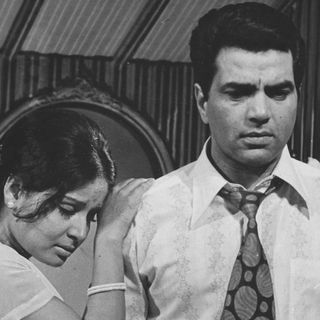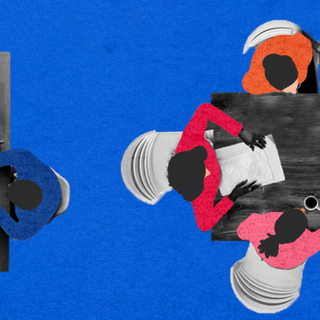
What Do Indian Biopics Tell Us About Our Culture Today?
From “Thalaivii” to “Chhapaak,” biopics today mark the cultural impulse that fails to ask: what makes somebody a hero worth looking up to?

“Biography is actually a quest for lives that speak to us,” writes biographer Hermione Lee. But whose stories are worth telling, and for whom?
Further, is greatness the objective, the selling point? Can anybody be great? Or is it reserved for a few, meant to be witnessed as a spectacle by others? A look at the filmography of recent years shows that Indian film industries have begun exploring these questions with more fervor lately, and their answers are telling.
“If we made two-three more biopics like this, we would end up giving Jayalalithaa sainthood,” writes Ranjani Krishnakumar in a review of the film Thalaivii (2021). The film — a Hindi-language biopic of the late Tamil Nadu Chief Minister J. Jayalalitha starring Kangana Ranaut — was released on Friday, September 10.
Biopics contain “what we can learn not only from a period in history or about the life of an individual person but about our own relationship, if we want, to the past and present,” according to Dr. Bélen Vidal, a film studies expert from King’s College London.
Indeed, the subjects of biopics provide clues about the cultural investments and anxieties of a particular moment in time. The recent explosion of biopics on political figures and sportspersons is not a coincidence.
The life stories of successful sports or political figures have some basic elements in common. Take Bhaag Milkha Bhaag (2013), Mary Kom (2014), Dangal (2016), or Saina (2021) for example. There is the seemingly ordinary, humble origin story, followed by societal obstacles, culminating in the triumph of the individual against all odds served with a dose of nationalism. It is a simple yet disarming formula — one that draws audiences in because of how easy it is to imagine the possibilities of greatness within oneself. The subjects chosen for biopics are thus a careful selection of individuals who will specifically be able to fit into this character arc mold. And who better to relate to, than “regular” people achieving glory through hard work and perseverance?
Related on The Swaddle:
Why We Idolize Some People As Heroes
In this way, biopics put individuals front and center of a narrative. As film scholars, Tom Brown and Dr. Belén Vidal write: “The biopic is at the center of a new wave of scholarly interest in transmedia formats… and the possibilities opened up by a new digital culture obsessed with the self.”
The need for a hero and a happy ending signals exhaustion with the grind of daily life, and the desire to escape into not just fantasy, but a real story of success. The odds that characters in a biopic overcome are often personal and only vaguely structural, lending to the impression that anybody can succeed if they simply work hard enough, or want it badly enough. The crop of popular biopics in Indian cinema, sanitized of all messiness and dark edges, reflects this aspirational middle-class zeitgeist that is concerned only about personal advancement and mobility.
“The audience is invited to see themselves in the hero, to imagine that they can achieve the middle-class dream too if only they put in a little more effort, if only they overcome the barriers that hold them back. At the core of these inspirational stories is always the individual; the system is meant to be ‘won’ rather than questioned or dismantled,” writes Himanshi Sharma for The Daily Pioneer.
There is another element to the slew of political biopics, such as Thackeray (2019) or Kathanayakudu (2019), to name a few. Based on the lives of Bal Thackeray and N.T Rama Rao respectively, these films — released on the heels of various elections — serve as hagiographies that lionize certain figures for electoral gains. Elevating them to legendary status was the whole point.
Michelle C Pautz, a political science expert, found through her research that “movies contribute to the political socialization of people (young adults in particular), and so what audiences watch and how certain institutions are portrayed over time, can be very significant.”
In an atmosphere of fervent nationalism and political paradigm shifts, it is no accident, then, that the most recent Indian biopics — those whose lives speak to us the most — are those of politicians and sportspersons. The reverential treatment of sportspersons representing the country, or of lionized political figures, reflects the jingoism and authoritarianism that reflect the prevailing socio-political moment.
Indeed, “one important thing about biopics is that every time a new government is in power we are fed a new version of history and history is always about conquests and emperors and kings and leaders and through their stories we are told history. But the real history lies in the lives of ordinary people in those times,” Hansal Mehta, the director of Shahid (2012), told Hindustan Times.
But merely the story isn’t the full story, so to speak. It matters who is chosen to portray the person in question too. If the question “who would you want playing you in a biopic about your life?” sounds familiar, it is because audiences are equally invested in the spectacle of watching one compelling individual playing another.
“If they can get a big-name actor to play a very famous person, it’s like an irresistible force meeting an immovable object,” says film critic Peter Bradshaw.
It would not be a stretch to say that the actors’ own personalities bleed into the characters they play on-screen, and are thus also a function of the kind of stories that filmmakers set out to tell. Kangana Ranaut, who plays Jayalalitha in Thalaivii, is a firebrand actress who has constantly courted controversy, flirted with politics, and has captured the public’s fascination — drawing awe and revulsion in equal measure. Her previous biopic outing was Manikarnika (2019), which joined a crop of historical nationalistic revival narratives. Akshay Kumar, another actor who has made a name for himself as a steadfast patriot, has also carved out his own niche in this genre.
The recent boycott of Deepika Padukone’s Chhapaak (2020) shows just how much the stars matter to the biopic. When Padukone visited the JNU campus in 2020 following violence perpetrated by Akhil Bharatiya Vidyarthi Parishad (ABVP) goons, a sizable section of the population boycotted her biopic about acid attack survivor Laxmi. Instead, they favored Tanhaji (2020) which portrayed a simplistic ‘good versus evil’ narrative as an equivalent to ‘Hindus versus Muslims’.
How well biopics are received by audiences is also telling of gendered dialogue in society. When the ‘formula’ of nationalism, sport, and patriotism is peeled back, a gendered pattern emerges in terms of which films do “well” in the box office. There is the story of the tragic woman, based on the life of women who are considered interesting for their trauma rather than accomplishments. Mahanati (2018), The Dirty Picture (2011), and Neerja (2016) are all ostensibly good films. What they all share in common is that the main draw is in how these films end. Audiences know what to expect, and are drawn to the inevitable conclusion of these films not despite them, but because of them. Voyeurism is inherent to biopics about women that aren’t related to sports.
Related on The Swaddle:
Why Do Heist Shows, Movies Appeal To Us?
Similar stories about men — such as Shahid (2012) or Aligarh (2015) — are critically acclaimed but don’t do as well in commercial terms. On the other hand, the “hit” films about men are those who celebrate them for their accomplishments and sanitize their personal failings or societal obstacles. Sanju (2018), Padman (2018), and Gold (2016) are all about a swaggering rockstar tiding through many lows and emerging whole, a “common man” who accomplished something big, and a hockey coach who brings national glory respectively.
“We are probably at a time when it has become important for us to have heroes to look up to because all the figures to look up to seem to be tainted in so many ways. It is great to be able to tell stories that may inspire us, which is why one is feeling that biopics are working much more today,” Siddharth Roy Kapur, producer of the Aamir Khan-starrer Dangal (2016), told Hindustan Times, on the recent success of biopics. In a time of political upheaval and cultural unrest, this may well be true.
But a question that is missing from the conversation is this: what makes somebody a hero worth looking up to? The message from audiences is clear: they are people (mostly men) who are larger than life, who manage to stay alive and thrive despite everything life throws at them. And this, perhaps, says a lot about the class of moviegoers who elevate such figures. The whitewashing of the dark realities of caste, religious, gender, and class violence and avoiding structural critique entirely, is a function of the audience that biopics serve.
The lives that speak to us, therefore, are those that can promise us that despite life’s challenges, sometimes all does indeed end well. Whom we tell stories about, therefore, say a lot about whom we want to tell stories for.
Rohitha Naraharisetty is a Senior Associate Editor at The Swaddle. She writes about the intersection of gender, caste, social movements, and pop culture. She can be found on Instagram at @rohitha_97 or on Twitter at @romimacaronii.
Related


The Buzz Cut: After a UFO ‘Experience,’ Demi Lovato Announces They Will Look for Aliens on Earth
